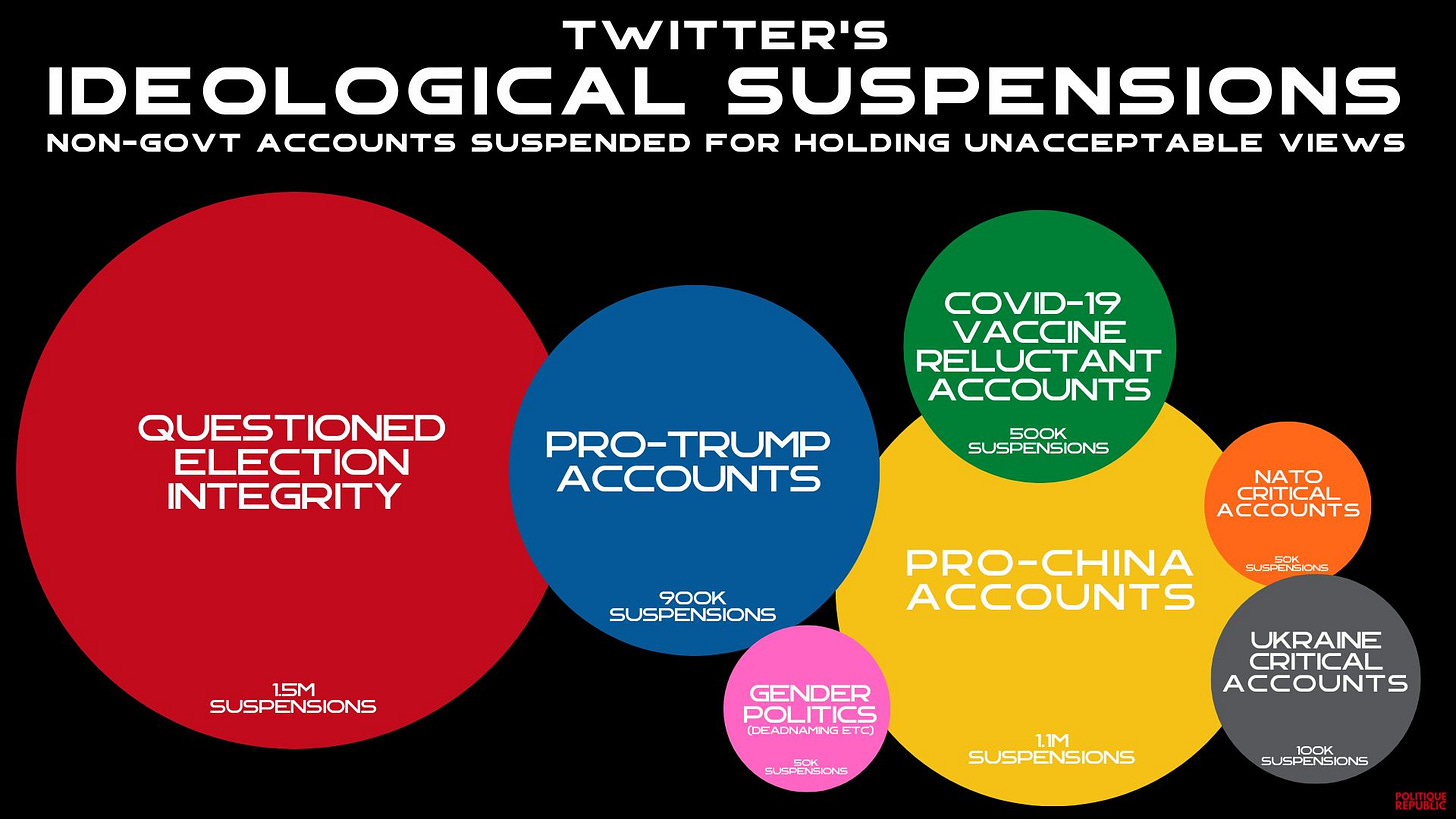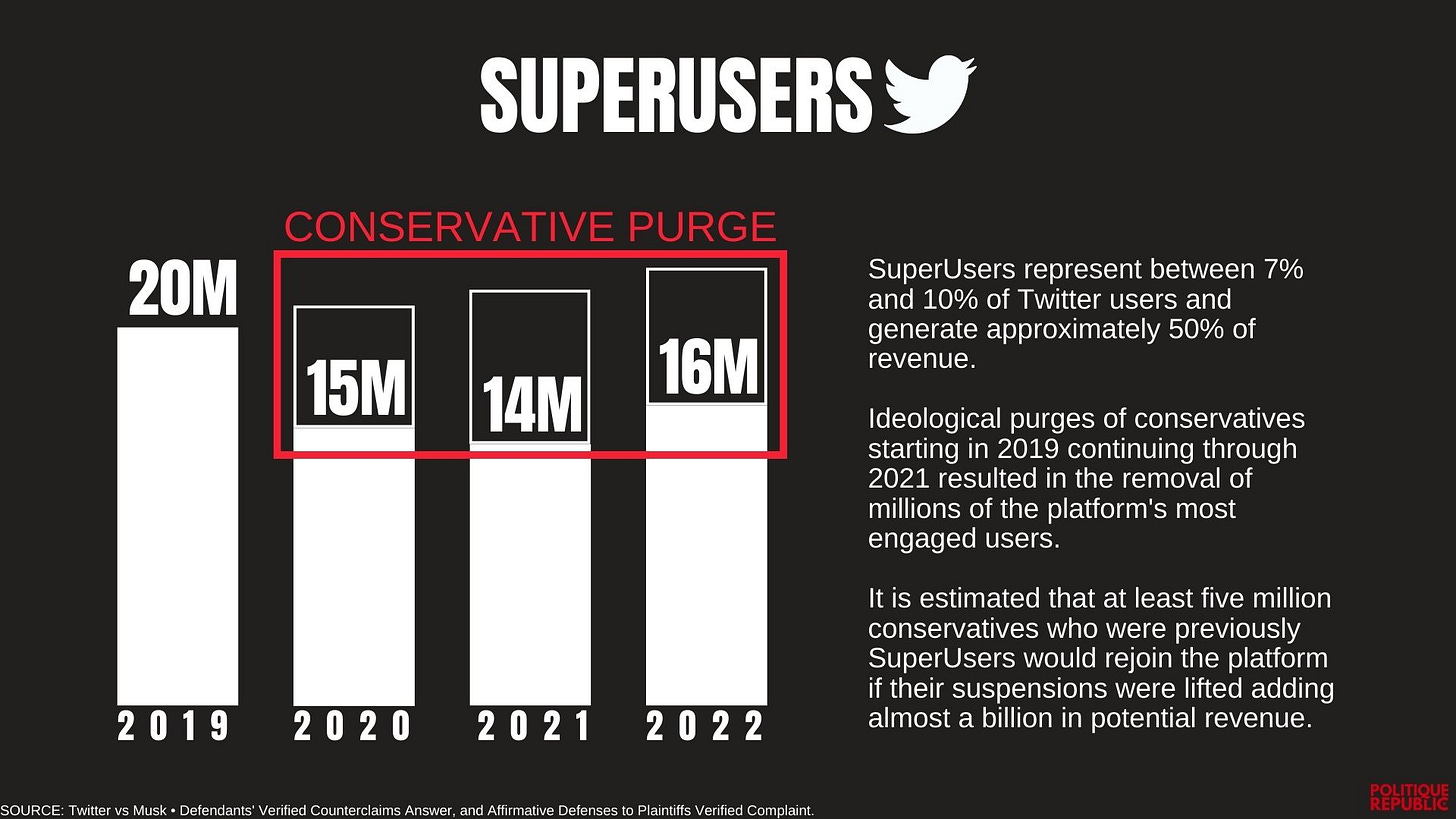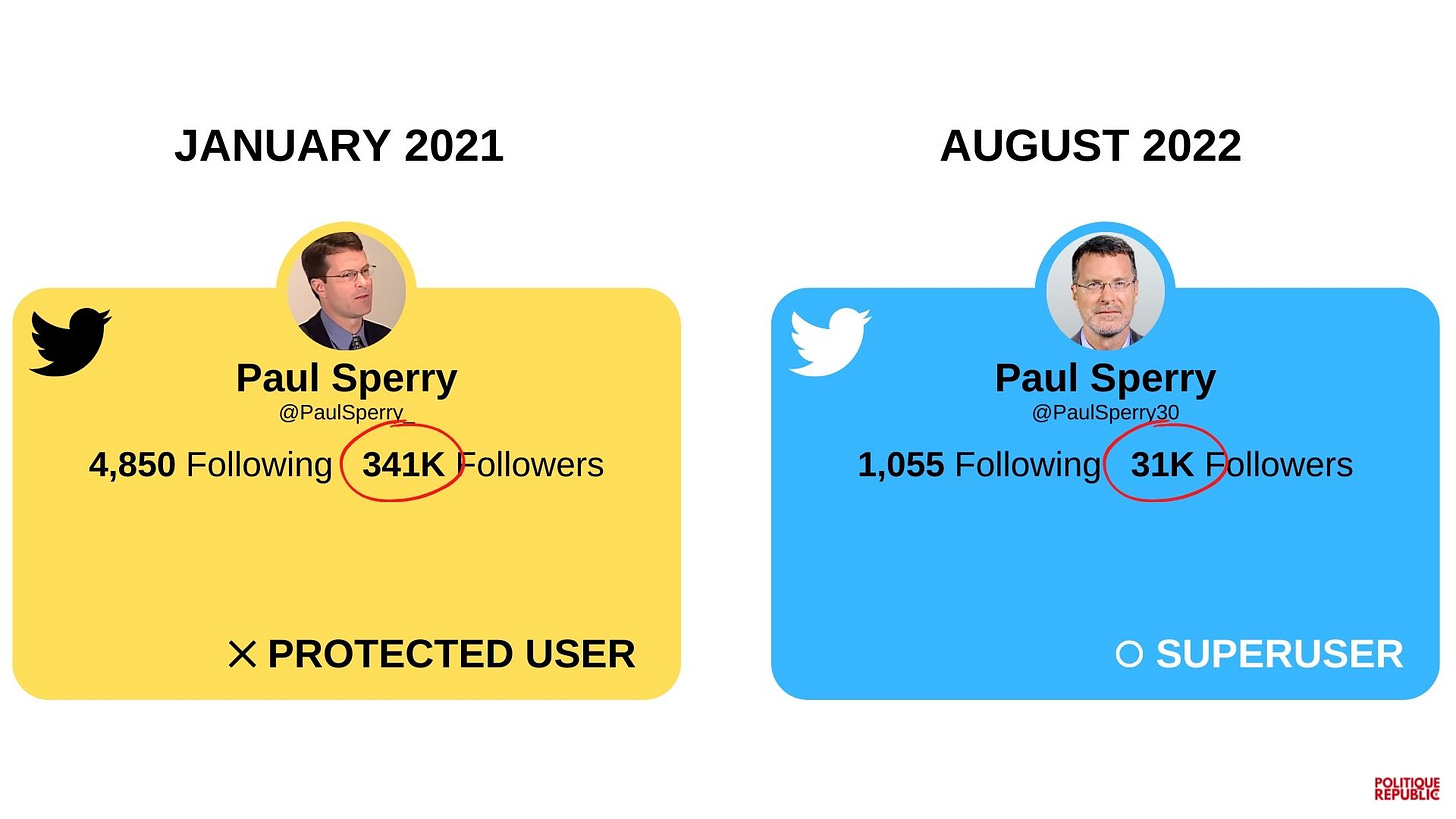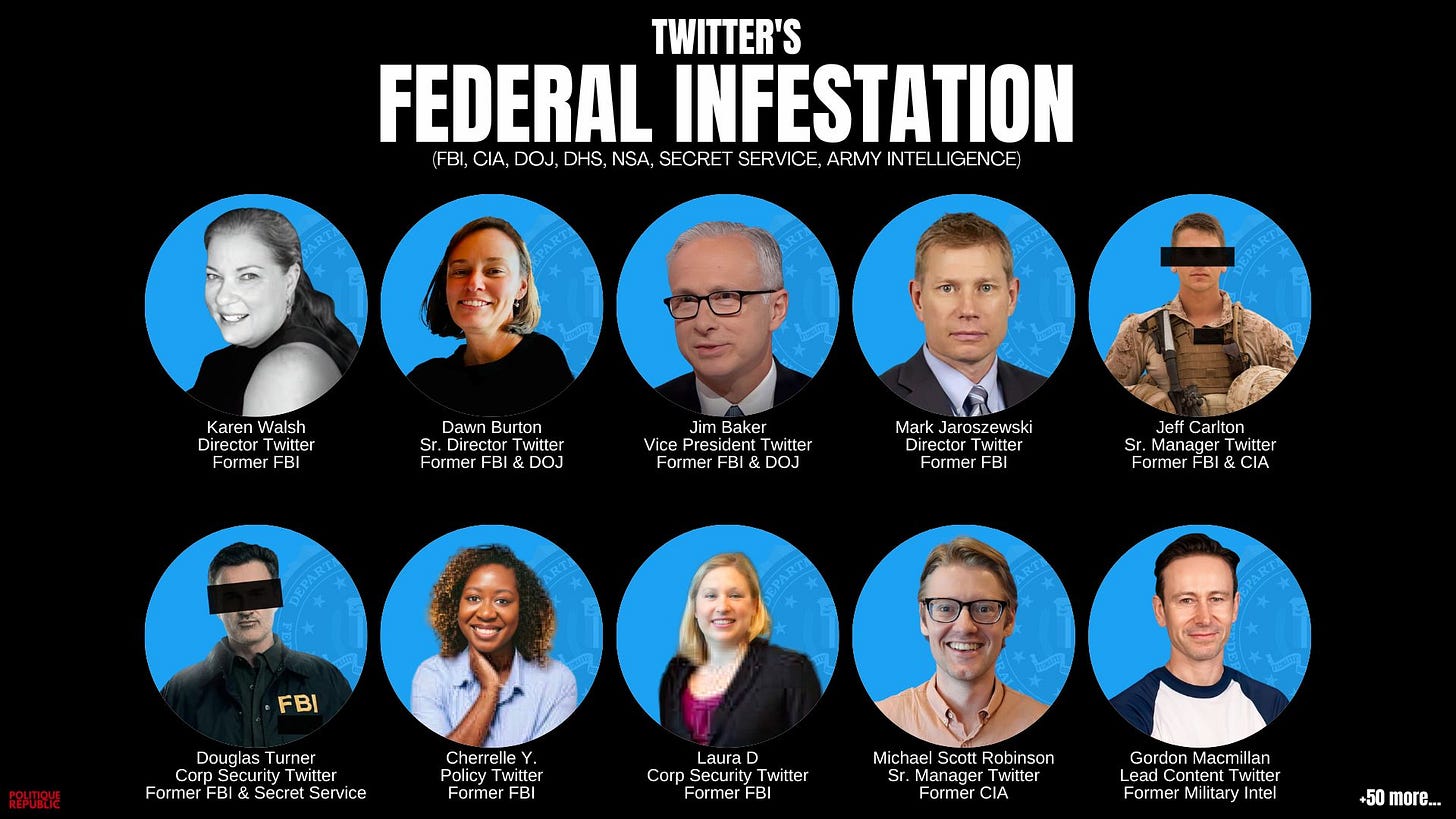Twitter Operated a Modern-Day Star Chamber Working at the Behest of the Government to Silence ‘Dangerous’ Speech from People like Paul Sperry [UPDATED]
The Stanford Hoover Institute fellow, journalist, and author was suspended from Twitter over his criticism of the FBI's raid on the former president's home.
UPDATE No. 2: Elon Musk’s release of the Twitter files has confirmed this account and revealed that things were far worse than any of us imagined.1 FWIW this post was written prior to Musk’s takeover of Twitter.
UPDATE No. 1: Professor Jonathan Turley has picked up this story as well in a post titled, “Twitter Permanently Bans Paul Sperry After Posting on the Mar-A-Lago Raid.” Turley’s take is worth a read.
Just who was Paul Sperry and why was he suspended from Twitter? As it turns out Paul Sperry is a Fellow at Stanford’s Hoover Institution and a journalist whose coverage of the White House and Congress is regularly featured in the National Review, The New York Post, Fox News, and RealClear Investigations. Paul’s coverage of the FBI’s raid on former President Trump’s home was critical to say the least and it was clear his tweets were ruffling feathers. With just 31,000 Twitter followers he’s considered a so-called SuperUser but since he has under 100,000 followers his account is subject to summary suspension without review. Just how many SuperUsers like Paul have been purged from Twitter’s platform in the last few years? Estimates are that as many as 10,000,000 relatively unknown conservative voices have been silenced since the 2020 election.
The curtain hiding Twitter’s darkest secrets is slowly being pulled aside as scores of legal documents become public as a result of a litany of lawsuits facing the company in state, federal, and even international courts. For example, public filings in the Twitter v. Elon Musk trial revealed that the company categorizes users based on their value to the company. In one case, so-called SuperUsers that represent fewer than 10% of total users are responsible for generating more than half of the company’s revenue.
The typical SuperUser has fewer than 100,000 followers and is usually unknown to anyone outside of Twitter. These SuperUsers are VERY valuable to Twitter because they create the platform’s content. The average SuperUser’s content reaches as many as 20,000,000 people in a given day making them the lifeblood of the platform. Of course, SuperUsers are also the users most responsible for amplifying messages that Twitter employees find most distasteful.
SuperUsers became a huge internal focus in 2019 when Democrats found their battle cry that President Trump was an Existential Threat to Democracy. Democrats publicly worried that conservatives had the upper hand on Twitter and media outlets like Politico just fanned the flames by publishing studies that purportedly showed that conservative “voices far outweigh liberals in driving conversations on hot topics leading up to the election.” Twitter employees, 99% of whom are Democrats according to the Federal Election Commission, watched helplessly as President Trump used their platform to dominate the headlines while SuperUsers amplified his messages.
As the presidential election neared the company’s internal message boards were overflowing with a spasmodic mixture of anger, helplessness, resignation, and panic. One particularly popular message provided a point-by-point comparison of Trump’s rise to power with Adolf Hitler - the consensus was that given another term Trump would rule for life and democracy would end. Twitter employees considered SuperUsers to be Hitler’s enablers - without whom the Holocaust wouldn’t have been possible. Twitter’s management knew that they were responsible for at least 50% of the company’s revenue - it simply couldn’t afford to silence them.
Eventually, Vijaya Gadde, Twitter’s head of legal, policy, and trust convinced the executive team that if they didn’t do something about the SuperUsers and their amplification of the president they would have an out-and-out revolt on their hands not to mention four more years of President Trump. Twitter gave its employees the authorization and the tools to begin temporarily and/or permanently suspending SuperUsers that violated the company’s civic integrity policy - code for anything that might manipulate or interfere with the presidential election in favor of President Trump.
Purges of conservatives came in waves and were justified in various ways. Thousands of users who shared articles that named the whistleblower that leaked the contents of President Trump’s call with Volodymyr Zelenskyy were permanently suspended. Thousands more were labeled QAnon and suspended for sharing conspiracy theories that Bill Clinton was a frequent guest of Jeffery Epstein’s island. More than a million conservatives who shared content from Hunter Biden’s laptop were suspended for sharing hacked information, personal information, or Russian disinformation (depending on which week it was).
The biggest purges came after the 2020 election as conservatives on Twitter began discussing election fraud - my own permanent suspension came after I shared an article about a Mississippi election where a judge found that 78% of mail-in-ballots were found to be fraudulent and a new election was ordered. Politifact eventually determined the story was true but Twitter never responded to my appeal - like millions of other relatively unknown conservatives caught in the purges my account remains suspended to this day.
While Twitter was loosening the suspension rules for accounts with under 100,000 it significantly tightened protections for larger accounts. Users with more than 100,000 followers are reportedly classified as “Protected Users” and cannot be suspended without an internal review to determine the reputational impact a suspension might cause. Back in 2020, Paul Sperry was a Protected User with more than 340,000 followers at one point. While Sperry’s coverage of the White House and Congress was regularly featured in the National Review, The New York Post, and Fox News his account never drew that much attention inside Twitter until President Trump retweeted him 16 times and quote-tweeted him another 6 times.
Overnight Paul Sperry, known as Little Himmler on Twitter’s internal message boards, was Enemy No. 1. Despite the guardrails implemented to protect accounts with more than 100,000 followers Sperry’s account would be suspended and restored and suspended multiple times. Eventually, once President Trump had been purged from the platform Paul Sperry disappeared as @PaulSperry_ and reappeared as @PaulSperry30. With the loss of over 300,000 followers, Paul was no longer protected but he had fallen off of the radar of Twitter’s true believers.
Fast forward to the FBI’s raid of President Trump’s home and Paul’s coverage was gaining a LOT of attention within the Biden administration. Here were his final tweets prior to being suspended:
As a SuperUsers with fewer than 100,000 followers Paul’s account was eligible for programmatic suspension - i.e. using a tool to identify those using problematic hashtag(s) or linking to particular stories or publications, individually - i.e. reported by another user and verified by a Twitter employee, or through a partnership - i.e. reported by the FBI as a probable foreign or domestic MVE.
While I might sound like a conspiracy theorist suggesting that the FBI placed Paul’s name on their suspected domestic MVE list used by Big Tech firms like Twitter, you should hear me out. Twitter has made a concerted effort to recruit former FBI agents and former employees from other three-letter government agencies. Twitter has created a revolving door with the FBI making it clear that there is always a place for former agents. In fact, Twitter has more former FBI agents per capita than any other publicly traded company making for a very cozy two-way relationship. We’ll never know if it was a former FBI agent at Twitter who put Paul’s name on the list or a current FBI agent still with the bureau. They’re simply never going to tell us. What should concern us is the fact that Twitter is STILL silencing conservative voices - as long as those voices aren’t loud enough to cause them reputational harm. We need to find a way to help the 10 million or so deplatformed conservatives find their voice - we need to shut down Twitter’s Star Chamber.









